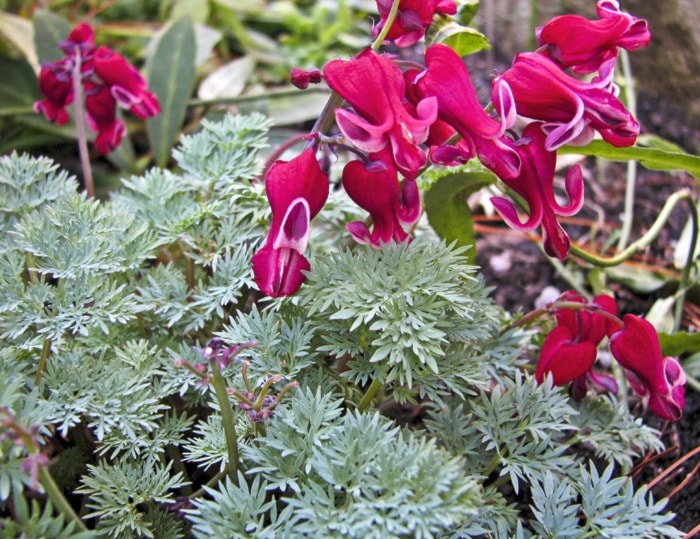Dang it! They have done it again! The scientists, I mean.
They have gone and changed the name of another plant. This time they are messing around with an old garden favourite...bleeding heart.
That lovely, roll-off-your-tongue name, Dicentra, is no more. Try Lamprocapnos on for size. Trust me...it is harder to remember how to spell, too.
Actually, I did some checking when I came across the chance article informing me of this change. Way back when, bleeding heart was originally assigned to the Fumaria genus by Linnaeus in 1753 but was then moved to the Capnorchis genus in 1797. From there it became a Dicentra, then a Diclytra, a Dieltra and a Eucapnos before winding up as Dicentra once again. Dizzying!
Enter the era of genetics and DNA. Thankfully.
Time to settle bleeding heart's parentage once and for all. And guess what?
They discovered in 1997 our bleeding heart is more closely related to the other seven species in the Lamprocapnos genus over all of the other six genus that have foster-cared it up to now. Yet one more name change.
I guess it is nice to finally be getting things set straight but even the Royal Horticultural Society was reluctant to give up bleeding heart's Dicentra designation. It took them until 2006 to make the name change official.
And you will notice the nurseries are even more reluctant to give up on Dicentra as evidenced by their refusal to make new name tags.
At least we have the common name, bleeding heart, to fall back on. But don't stop there.
As many Latin names as Dicentra has used up, it has even more common names attached to its stems. Dutchman's breeches and Chinaman's breeches are likely familiar to many gardeners but I found a few that I didn't know...lock and keys, lyre flower, seal flower and my favourite, lady in the bath.
Luxurious. But has anyone ever heard of Dicentra being called Venus' car before? Can't figure that simile out.
And there is one more common name...valentine flower. How appropriate!
It was an absolute fluke I had chanced on the article about the Dicentra name change and decided to write about it in my column...the column scheduled to be published right around Valentine's Day.
However, I do have one problem...a bleeding heart for my sweetheart, so to speak. I had found a comment that claimed florists used the valentine flowers in bouquets for Valentine's Day.
Looking through my photos...all of our various Dicentra, oops! I mean Lamprocapnos species, do not come into bloom until the end of April, early May. Definitely too late for my Valentine bouquet.
• • •
I spoke about genetics earlier.
A good time to remind everyone that our local Seedy Saturday event is just around the corner, on March 2. This is an awesome opportunity to get those lovely open-pollinated seeds just in time to start this year's garden.
It is also a great opportunity to get to know your local seed suppliers. They are wholesomely enthusiastic and so willing to offer you growing instructions for whatever varieties you are buying.
Another bonus...these seeds have been grown out on Vancouver Island and the Gulf Islands. Some seeds have even been grown out for years locally. That means those seeds have acquired traits to better withstand growing conditions particular to our part of the world.
One last word of caution.
While I could find references fresh cobs of GMO sweet corn had made it onto grocery shelves in 2012, I have not yet found any direct reference of GMO sweet corn seeds available to home gardeners. But that is not to say the seeds may be offered for sale in some 2013 seed catalogues.
Always err on the side of caution with sweet corn. Buy organic. Worth the price.
Leslie Cox co-owns Growing Concern Cottage Garden in Black Creek. Her website is at www.duchessofdirt.ca and her column appears every second Friday in the Record.
